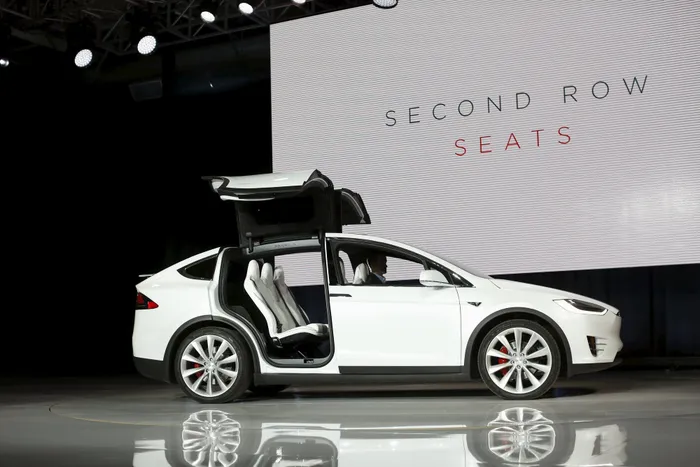Elon Musk announces Tesla is moving from California to Texas - What does this mean?

Tesla will move its headquarters from Palo Alto, Calif., to Austin, CEO Elon Musk announced at the company's annual shareholder meeting. REUTERS/Stephen Lam TPX IMAGES OF THE DAY
SAN FRANCISCO - Tesla will move its headquarters from Palo Alto, Calif., to Austin, CEO Elon Musk announced at the company's annual shareholder meeting.
Musk had hinted for months that a move to Texas could be imminent. He also started residing in the state - the country's second largest and most populous - where Tesla has ramped up a factory in Austin and where many of the operations for his aerospace firm, SpaceX, are based. Musk lashed out last year at California's restrictive shelter-in-place measures during the coronavirus pandemic and their effect on the company's ability to operate its largest production facility in Fremont, Calif.
But a move of the company's corporate headquarters signals a major shift for Tesla, which traces its roots to Silicon Valley and has drawn from a lush environment of incentives for electric-vehicle buyers and green-energy initiatives to propel its growth. The company's proximity to Stanford University has provided a rich landscape of engineers to choose from - and its Silicon Valley location placed it within the radius of numerous technology companies, including Google, Apple and Facebook.
"I'm excited to announce we are moving our headquarters to Austin, Texas," Musk said. "Just to be clear, though, we will be continuing to expand our activities in California. This is not a matter of Tesla leaving California."
Musk said Tesla has approached the limits of its capacity in California, though it will continue to grow in the state, aiming to increase its output at the Fremont plant by 50%. The Austin move, he said, gives the company the chance to build out in a location where there is ample space to support its growth. Capacity at the Fremont factory, where Tesla has more than 10,000 workers, has reached its limits.
Tesla's corporate headquarters occupies a lot in Palo Alto's Stanford Research Park that had been the site of other companies, such as Hewlett-Packard. The area quickly became constrained as the company grew, with workers unable to park at the office and some shifting to other locations around the Bay Area. The location, at 350,000 square feet on 23 acres, was built to house hundreds of employees.
"Roughly 350 employees will work in Palo Alto initially, with space for up to 650 people at the facility," read a Tesla news release at the time.
Tesla noted in its release that the move to Palo Alto and the build-out of the facility was funded in large part by U.S. Department of Energy loans. The company noted how it had received nearly $465 million in low-interest loans "to accelerate the production of affordable, fuel-efficient electric vehicles," precipitating its move.
In Fremont, meanwhile, Musk said Tesla arrived to a sprawling facility that it could hardly fill out, where it was like "kids in parents' shoes."
"Now we're like spam in a can here," Musk said.
He added that Austin proved more accommodating for the pool of workers Tesla is aiming to attract to the company. The costs and constraints of the Bay Area began to be prohibitive, he said.
"It's tough for people to afford houses and a lot of people have to come in from far away," he said. "There's a limit to how big you can scale in the Bay Area."
Mike Ramsey, automotive analyst with Gartner Inc., said the decision reflected numerous business concerns - from the growth of the company to Musk's place of residence and the escalating presence of his other company, SpaceX, in Texas. For many workers in California however, he said, little would change.
"Texas - in my view - the main thing that it has going for it is that's where the center of gravity has moved for SpaceX," Ramsey said. "If you're planning to put manufacturing there, it is a lower-cost business state than California there's no doubt."
Still, "it's more than symbolic but you know for a lot of people in California and people who work there, [that] probably won't change," he said.
But the move would likely have an impact on how Tesla would approach California going forward, said Jason Schloetzer, Professor of Business Administration at the Georgetown McDonough School of Business.
"In Austin, they're going to have a pretty large workforce there when that facility opens; I would anticipate they may consider drawing down production in California over the medium-term," he said. "It seems like a natural evolution of decisions they've made recently to relocate their business out of California."
He cited Austin's rapid growth, relatively young population and the presence of a major university with the University of Texas at Austin as factors that fell in the city's favor. And Texas has landed entities such as Oracle and Hewlett-Packard Enterprise recently in part by playing up its attractiveness to business.
"Texas is viewed rightly or wrongly as a business friendly environment and they've been actively trying to develop the Austin area as a technology hub," said Schloetzer.
Musk threatened last May that a Texas move could be imminent amid California's shelter-in-place orders, which had prevented him from reopening Tesla's main production facility in Fremont.
"Tesla will now move its HQ and future programs to Texas/Nevada immediately," he wrote on Twitter in May 2020, though a move did not follow then. "If we even retain Fremont manufacturing activity at all, it will be dependen[t] on how Tesla is treated in the future."
At the meeting, Musk laid out his vision for the Austin factory, as Musk touted its proximity to the airport and downtown.
"We're going to create an ecological paradise here because we're right on the Colorado River," he said.
THE WASHINGTON POST
Related Topics: